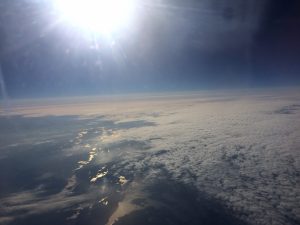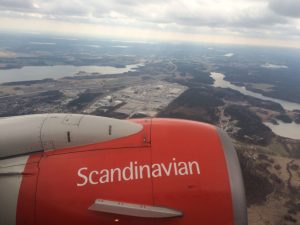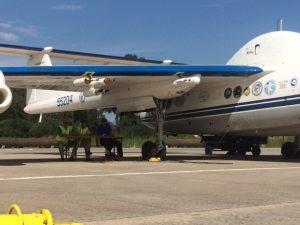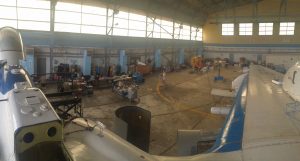One major goal in the WISE campaign is to follow the time evolution of air masses in the UTLS (upper troposphere-lower stratosphere) and to see how they are affected by tropopheric-stratospheric exchange. The latest (and upcoming) research flights are planned to provide an idea of exacty this time evolution. Flight 10 last Saturday was targeting a feature in the West-Atlantic with the plan to probe the same air again in later flights. At the moment, HALO is on its way to catch it now, two days later close to the Norwegian border.
There are some very nice things you can spot from a plane. Not only clouds and the ant farms that actually are cities but also atmospheric phenomena. I have seen for the first time a “Glory” on my way to Ireland. On top, a colleague (Peter Hoor from the Johannes Gutenberg University Mainz) took a very nice picture of so-called “Kelvin-Helmholtz instabilities” on a research flight with HALO last week. So I just wanted to show you the pictures here and give you a short explanation on what it is.
Yesterday evening at 19:28 (German time), HALO with the WISE instruments onboard landed at Shannon airport. The flight from the DLR site in Oberpfaffenhofen was used not only as a transfer but to investigate some of the WISE scientific goals on the way. Therefore instead of going to Shannon directly, the transfer was enlonged to a 10-hour research flight passing by Southern Norway, up north beyond the polar circle and coming down over Iceland. Eventually, a hexagonal flight pattern for tomographic evaluation was added above the North Atlantic crossing over from Iceland to Ireland.
Just about a month after the successful StratoClim campaign is over, there is the next measurement campaign with IEK-7 participation “taking off” at the moment… so welcome to WISE! During the next 5 weeks, Irene, Isabell, Lukas and me (Conny) will keep you posted here in the blog about what is going on with our instruments on-board of HALO.
Usually there is one EMC test for each measurement campaign. This is to test if any instrument interferes with the aircraft electronics. We had our EMC test on Friday 26th of August (picture).
For the EMC test procedure the plane is supplied with ground power first, then the engines are switched on and the ground power is switched off. This way the instruments should continuously be supplied with power.
Last Friday we noticed that shortly after switching on the engines all instruments where shut down and the big question was: Why..? Around 25 years ago a safety feature was implemented to Geophysica. As soon as one engine fails (in theory during flight) all instruments are shut down automatically to provide as much power as possible to the aircraft for landing. Not on purpose, but exactly this was done during the first EMC test so that we repeated the test Monday morning, this time we were more successful.
The first real measurement flight was already yesterday. Geophysica and all instruments were already 30 minutes longer running in the sun than planed, so some instruments had problems with overheating. In general ,I believe, the atmosphere towards this first measurement flight is positive. Some groups collected some good data and are ready for the next flights, some are already happy to have measured data at all 😉
Our research aircraft Geophysica and most of the Scientists arrived Monday 22nd of August. We are all in the process of integrating our instruments now.
The hangar here is small, very ‘basic’ and due to some holes in the roof, not every instrument is protected from rain, which we already experienced yesterday. We struggled with the electricity supply and internet connection. It is warm and humid, but we are lucky that we don’t have any dress code like the officers around us with their thick overalls.
The campaign is planned to continue until Sep 9th. In total 4 measurement flights are planned. The first EMC test is scheduled for tomorrow morning 7 a.m. to test if any instrument is disturbing the aircraft electronics.


Greetings from Stockholm!
The container with all the equipment and our instruments is already at the Arena Arctica in Kiruna now we have to get there.
We just landed in Stockholm and will continue our journey to Kiruna in two hours. Most of us got up at 3 am this morning to catch the flight, our collegues from the U.S. have a longer way and took off already yesterday afternoon (german time).






Recent Comments